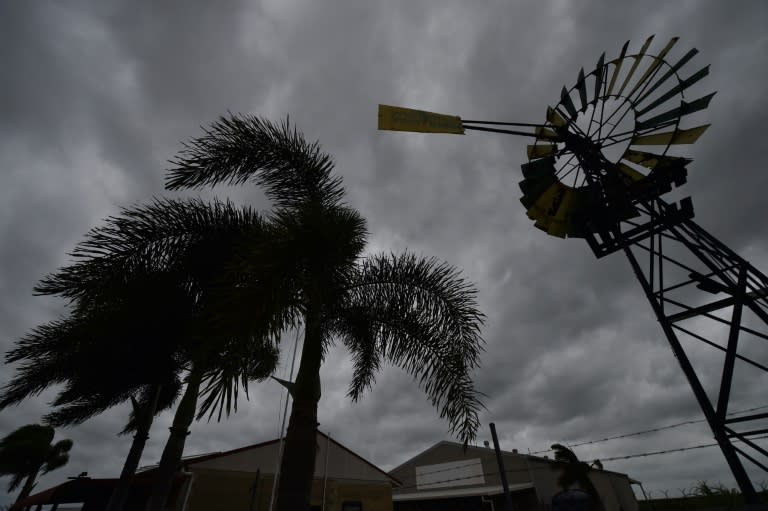How Cyclone Debbie got her name
The huge storm that tore through parts of northeastern Australia this week was almost called Caleb instead of Debbie. The next one will be named Ernie. Debbie started life as a tropical low off Queensland state, but formed into a cyclone just after Caleb -- another weather system brewing off Western Australia -- fizzled out. The process of chosing a moniker for storms comes from a formal system managed by the World Meteorological Organisation, with 10 global regions submitting names. "The practice of naming storms (tropical cyclones) began years ago in order to help in the quick identification of storms in warning messages because names are presumed to be far easier to remember than numbers and technical terms," the WMO website said. They used to be arbitrarily picked, but by the middle of last century the practice of using female names began, with meteorologists later moving to an alphabetic list. Australia was the first country to switch to alternating between male and female names in 1975, according to its Bureau of Meteorology, and other areas have followed suit. Currently, Australia uses 104 names in a system that started from the 2008-09 season. Other regions, such as the Caribbean Sea, Gulf of Mexico and the North Atlantic, use names better suited to their parts of the world. First up in 2016-17 for Australia was Yvette. Before Debbie came Caleb, Blanche and Alfred, with the next tropical cyclones set to be Ernie, then Frances, Greg, and Hilda. Despite the threat of disaster and chaos, some Australians took to social media to joke about the name Debbie, riffing on a 1978 pornographic film "Debbie Does Dallas". "Debbie Does Queensland" and "Debbie Does Australia" were some of the popular taglines on social media sites. "This cyclone is a missed opportunity. It should have hit the Northern Territory. Then the headlines could have read "Debbie Does Darwin"," one Twitter user added. The National Australia Bank joined in, with their daily economy podcast using the headline "Debbie Does Damage" when touching on the cyclone's impact. Australians looking to add to the arsenal of storm names are welcome to make suggestions, the weather bureau said, although they might have to wait a while until their nomination gets used. "We currently have enough names on the list to last for at least the next 10 years," said the bureau's senior meteorologist Andrea Peace. "Names can be reused but when a cyclone causes significant loss or damage, like Tracy in 1974, or Larry in 2006, we permanently retire them. "If a listed name comes up that matches a prominent person of the day, we move to the next name to avoid any offence or confusion." Cyclone Tracy was the worst low pressure system to hit Australia, slamming into the northern city of Darwin on Christmas Day 1974, killing 65 people. Category five storm Larry made landfall near Innisfail in northern Queensland in 2006, claiming one life and causing substantial damage.



